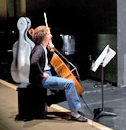Musicians from a Different Shore: Asians and Asian Americans in Classical Music, by Mari Yoshihara
This slim volume is not going to be a bestseller at Barnes and Noble but if you’re interested in how “Asians” find their way to the US to pursue a career in music, or the sorts of cultural stereotypes Asian-Americans encounter, you might find this book of interest. The author, an associate professor of American Studies at the University of Hawaii (Manoa), took piano lessons and sat in on master classes and other students’ lessons so that she could better understand the world of the musicians she interviewed. Two of the chapters are followed by first-person accounts of several of those musicians.
Chapter one, “Early Lessons in Globalization” is well researched and informative, and is easily the best part of the book. The author discusses the spread of Western music throughout Asia, largely because of colonial imperialism. She traces how schools in Japan (and later in Korea and China) began teaching western music and the influence that had on the cultures of those three countries. By the 1960’s a “reverse flow” of culture was taking place, with Yamaha and Kawai pianos entering the American market, and thousands of American children learning the violin using the Suzuki method.
By the second chapter the book loses focus, especially when the author tells us on p.64 “that ‘Asian’ is not the most salient category of identification for many of these musicians [because] their individual experiences of Asian-ness are quite different from each other and do not form a coherent identity that unites the group.” She then goes on to define the word “Asian” (used in the book’s title) as “east Asian”, including the countries of Japan, Korea, and China. That’s a huge geographic area, about as big as the United States, but with a population many times larger! Nearly every American who has traveled outside the US has had the experience of talking to a person in another country who has no concept of either the size or the diversity within the US, (“how far are you from Hollywood?”). The author’s definition of “Asian” as comprising those three countries is seriously flawed, and consequently I had a hard time taking the rest of the book seriously.
Luckily the author retained a good bit of objectivity–the musicians she interviewed wouldn’t have it any other way. Thus her conclusion, on p.233, is the same one most musicians have had: “Despite my hope that my piano playing would give me some epiphany about racial and cultural identity and music-making, for the most part my Japanese upbringing seemed rather irrelevant to my ability on the keyboard”. Whether our experience of music is either that of a performer or an audience member, the cultural heritage of the person onstage matters less than the music coming from within them. Two good examples: Leonidas Kavakos, a violinist of Greek heritage, who is a master of the music of both Sibelius (Finnish) and Bach (German); and Japanese pianist Mitsuko Uchida, renowned for her interpretations of Mozart and Beethoven (Austrians).


No comments yet.
Add your comment